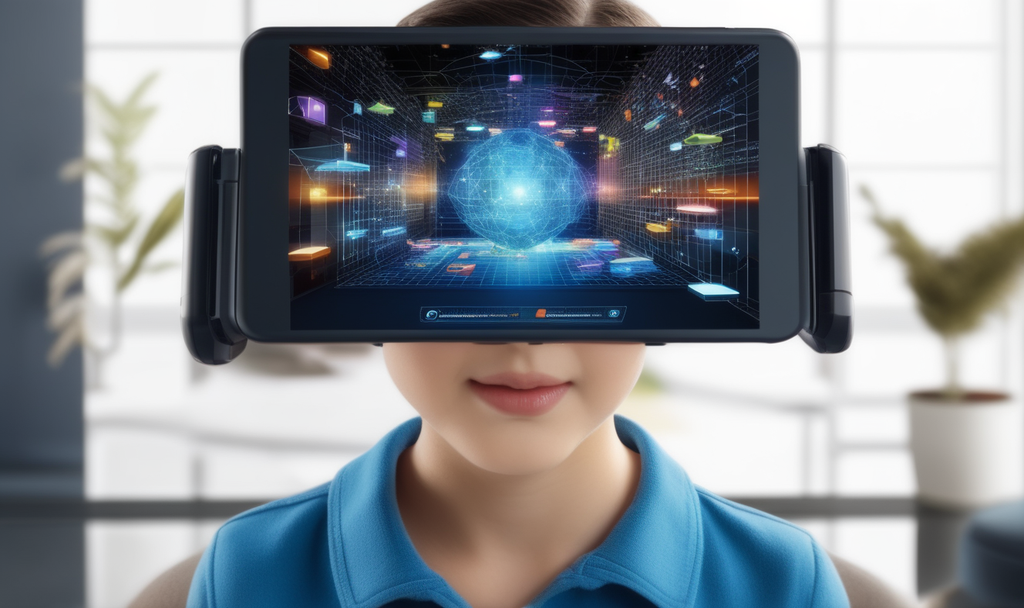Imagine a world where learning leaped out of textbooks and into your own living room. Where dinosaurs roamed your backyard and historical events unfolded before your eyes. This is the exciting potential of Augmented Reality (AR), a technology that overlays digital information on the real world, transforming education into a captivating and interactive experience.
What is Augmented Reality and How Does it Work?
Augmented Reality is a cutting-edge technology that uses your smartphone, tablet, or dedicated AR headset to superimpose digital elements onto your physical surroundings. Think of it like a magical lens that reveals hidden layers of information and experiences.
When you point your device at an object or image, the AR application triggers the display of digital content, such as 3D models, animations, videos, or audio. This creates a unique blend of the real and virtual, blurring the lines between learning and play.
Transforming Education with AR Apps
AR applications are rapidly revolutionizing the educational landscape, offering a plethora of benefits for students of all ages:
Interactive Learning:
AR brings static textbooks to life. Imagine dissecting a virtual frog on your desk or exploring the inner workings of the human heart in 3D. This interactive approach allows for deeper understanding and retention of complex concepts.
Enhanced Visualization:
AR helps visualize abstract concepts that are difficult to grasp through traditional methods. Witnessing historical events unfold in your own living room or observing the planets orbiting the sun in real-time sparks curiosity and ignites imagination.
Engaging Activities:
AR apps transform passive learning into active participation. Students can interact with virtual objects, solve puzzles, and participate in simulations, making learning a fun and engaging process.
Personalized Learning:
AR applications can be tailored to individual learning styles and needs. Students can explore topics at their own pace, access additional resources, and receive personalized feedback, fostering a personalized and effective learning experience.
Global Collaboration:
AR transcends physical boundaries, allowing students to collaborate and interact with peers from around the world. This facilitates cultural exchange, fosters teamwork skills, and broadens perspectives.
Examples of AR Apps in Education
Here are a few examples of how AR is being used in classrooms today:
- AR anatomy apps: Students can dissect virtual organs and examine the human body in 3D, gaining a deeper understanding of anatomy and physiology.
- AR history apps: Historical figures come to life through interactive holograms, allowing students to experience historical events firsthand.
- AR language learning apps: Students can learn new languages by interacting with virtual objects and engaging in real-time conversations with native speakers.
- AR science apps: Students can explore the solar system, conduct virtual experiments, and observe different scientific phenomena in their immediate surroundings.
The Future of AR in Education
The future of education is bright with the potential of AR. As technology continues to evolve, we can expect even more innovative and engaging AR applications to emerge. This will lead to personalized learning experiences, increased student engagement, and improved educational outcomes for all.
Building AR Applications for Education
If you’re interested in developing AR applications for education, here are some key considerations:
Define your target audience and learning objectives: Clearly define the age group and specific learning outcomes you want your AR app to achieve.
Choose the right AR platform: Opt for a platform compatible with your target devices and development tools, such as Unity or Vuforia.
Design engaging and interactive experiences: Focus on creating immersive and interactive experiences that promote active learning and engagement.
Ensure accessibility: Make your AR app accessible to all students, regardless of their abilities or learning styles.
Prioritize user safety and privacy: Implement safeguards to ensure the safety and privacy of users, especially children.
AR application development for education requires expertise in various fields like computer vision, 3D modeling, and instructional design. Consider seeking support from experienced developers and educational professionals to create effective and impactful AR learning experiences.
By harnessing the power of AR, we can unlock new possibilities for education, making learning more engaging, accessible, and effective than ever before. Let’s embrace this innovative technology and embark on a journey of discovery, where learning goes beyond the textbook and into the limitless realm of augmented reality.

